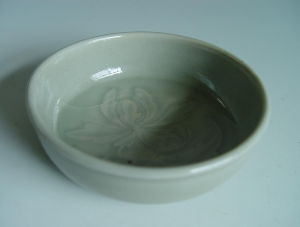Product
Fused Cast AZS Block
AZS Casting Type
AZS Ramming Materials
Fused Cast AZS TY-AZS41
Fused Cast AZS TY-AZS36
Fused Cast AZS TY-AZS33
Fused Cast Alumina Block
Fused cast Alumina Block TY-H
Fused cast Alumina Block TY-A
Fused cast Alumina Block TY-M
Fused Cast High Zirconia Block
Fused Cast Skid Rail Block
Silica brick
Magnesia Series Brick
Bonded Refractory Block
High alumina And Fire clay bricks
Insulation Series Brick
Ceramic Fiber Products
Contact Details
- 0086 371 63838939
- 0086 371 63835539
- sales@sunriserefr.com
- tkfanyi
- No.36 Fengchan Road, Zhengzhou City
Solutions
How to Select Refractory Materials for Ceramic Kilns
- More related products
- Fused Cast AZS Block
- Fused Cast Alumina Block
- Fused Cast High Zirconia Block
- Fused Cast Skid Rail Block
Although there are many different types of ceramic kilns and different requirements from customers, there are some basic principles for the refractory selection for the ceramic kilns.


1) Room temperature and high temperature properties
According to the manufacturing method, ceramic kilns can be constructed at site or prefabricated and assembled at site. No matter which one, the ceramic kiln is required to have certain strength at room temperature to bear the weight of the kiln and devices installed or placed on it. For the prefabricated kiln, given the transport, vibration, impact and other factors, the kiln is required to have certain strength at room temperature. Those conditions should be guaranteed by refractory bricks with certain cold crushing strength and tensile strength.
The ceramic kiln is running at high temperature. for different products, the maximum firing temperature is under 1300℃. Therefore, refractory bricks should be selected on the basis of the maximum firing temperature.
2) Insulation properties
Insulation is an important part of ceramic kilns. Limited to the factors such as space and structure, kilns cannot be too thick. So, within the allowed dimensions, try to choose materials with good thermal insulation properties to reduce the surface temperature of the kiln and reduce heat loss.
3) Heat storage
Refractory materials are required to have low heat storage in ceramic kilns. The increasing of heat storage can increase heat loss. For kiln cars, kiln pillar and shelf boards in continuous kilns, the lighter the weight, the lower the specific heat capacity, the less heat loss. In batch ceramic kilns, refractory bricks should have low heat storage under the premise of the previous two requirements to increase the speed of heating and cooling and reduce the heat loss of each heating period.
Modern furnaces are computer controlled. Refractory bricks with large heat storage will have large thermal inertia and reduce the accuracy of the automatic control system.
4) Cost
According to different requirements, the energy consumption of ceramic kilns can be divided into three grades: 8374-12560 kJ/kg, 6280-8374 kJ/kg and 4187-6280 kJ/kg. Similarly, in the field of refractory bricks, insulation materials also have different grades according to its quality and performance. Under the premise of ensuring the energy consumption indicators, optimize the combination of refractory materials and reduce the cost.
Read more
Need more information? Drop us a line
For more information on any of our products please get in touch using the form below. One of our sales team will respond to your enquiry as soon as possible.
Copyright © 2014 Zhengzhou Sunrise Refractory Co., Ltd. Site Index Product IndexSitemap









